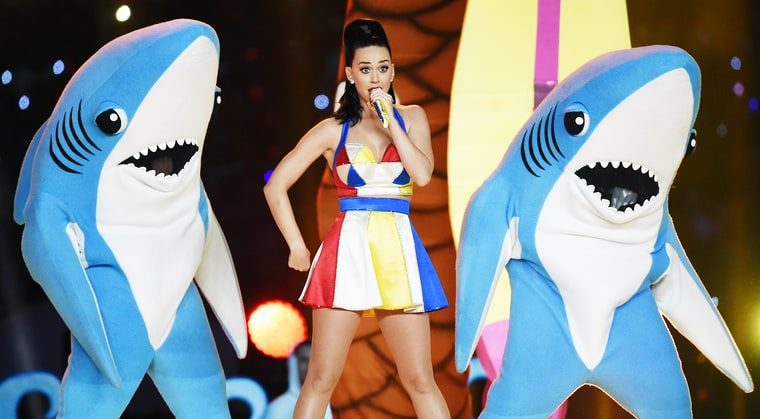
Super Bowl halftime show history
By Caroline Ho, Arts Editor
Halftime shows at the Super Bowl are at least as big a spectacle as the football games themselves. How could the largest annual TV event in the US be complete without a dazzling half-hour performance by some of the industry’s biggest pop stars? But as entrenched in American culture as it seems, the halftime show as we know it only started in the ’90s, and anyone who’s ever tuned into entertainment news is probably aware that it hasn’t exactly been a smooth run.
The National Football League was founded in 1920, and the first Super Bowl took place in 1967. In the first few decades of the championship game, the halftime shows consisted of performances by college marching bands and military drill teams. Family-friendly musical organization Up with People also starred in several shows from 1976–86, filling the field with song, dance, and eerily-cheery choreographed spirit.
These early halftime shows were centred around a theme, often something patriotic or a tribute to some notable event. 1969’s Super Bowl III had the theme “America Thanks,” and the following year’s Super Bowl in New Orleans had the theme “Mardi Gras.” Super Bowl VI’s halftime show was themed “Salute to Louis Armstrong” the year after the jazz legend’s death in 1971, and the show featured a performance by jazz singer Ella Fitzgerald.
In the ’80s, a few of the shows were more entertainment themed. In 1984, there was the Disney-produced “Salute to Superstars of Silver Screen,” where the University of Florida and Florida State University Marching Bands performed to a set list of movie songs. Super Bowl XXI in 1987 was a “Salute to Hollywood’s 100th Anniversary,” also put on by Disney, featuring a mix of Disney characters, marching bands, drill teams, and dancers.
But as fun and family-friendly as they were, early halftime shows were primarily put on for the stadium audience. Along with allowing a break for players, halftime had to keep the ticket-buying crowd entertained, and the shows were designed to be viewed from the stands. In the ’90s, the NFL finally realized they could tailor the show to a larger television audience across the country. Another Disney production came in 1991, with boy band New Kids on the Block also playing a couple of songs. However, the show wasn’t actually aired live on TV—instead, ABC News aired a special report about Operation Desert Storm during the half-hour, and the halftime show was broadcast after the football game was over.
Then in 1992, pop singer Gloria Estefan took the stage, accompanied by Olympic figure skaters Brian Boitano and Dorothy Hamill. However, the televised airing of this show also suffered its setback: Rival network Fox, in a deliberate attempt to steal viewers, aired their own halftime show, a live episode of the comedy sketch series In Living Colour, during the exact same half-hour slot. Fox even had a clock onscreen to count down the minutes until the football game resumed. In a news release prior to the Super Bowl, then-Fox president Jamie Kellner said he believed the “traditional halftime show is designed for the stadium audience” and “doesn’t translate well to television,” hence Fox’s offering of their own program.
To prove Fox wrong, the NFL retaliated by having none other than Michael Jackson perform at Super Bowl XXVII the following year. The NFL was determined to make their show be the show, and having the biggest star in the world on the Super Bowl stage worked. It seemed like the mid-game intermission should have been secured for pop music.
But then in 2004 there was the infamous “wardrobe malfunction” during the song “Rock Your Body” when Justin Timberlake exposed one of Janet Jackson’s breasts for half a second. Media pounced on the mishap, and it became the most sensational entertainment news story of the year. After the huge controversy and media storm that arose, the NFL decided it was time to go back to safer shows, and the next few years featured classic rock acts including Paul McCartney, the Rolling Stones, and The Who.
It wasn’t until 2011 that pop returned to the Super Bowl stage, with a performance headlined by the Black Eyed Peas. In the last few years, halftime has basically regained its reputation as the biggest televised pop music show in America. Aside from Katy Perry’s hilariously meme-worthy “left shark” incident in 2015, when one of two backup dancers dressed in a shark costume seemed to be dancing totally out of sync from the other, nothing too noteworthy has taken place.
The halftime show at Super Bowl LI, taking place in Houston on February 5, will be headlined by Lady Gaga. If it follows the trend of the last few years, over 100 million televisions in the US will be tuned in to see if anything new happens in the saga of Super Bowl halftime spectacles.


